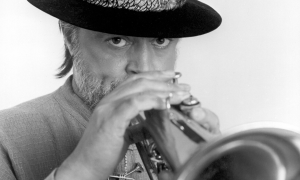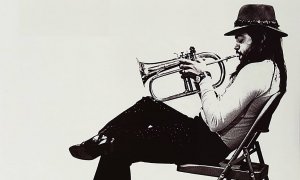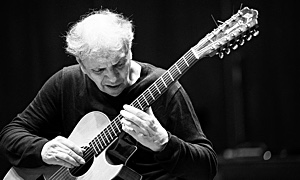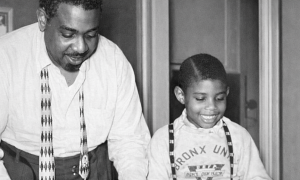Home » Jazz Articles » Catching Up With » Ben Allison: Creative Reworkings And New Inspirations
Ben Allison: Creative Reworkings And New Inspirations
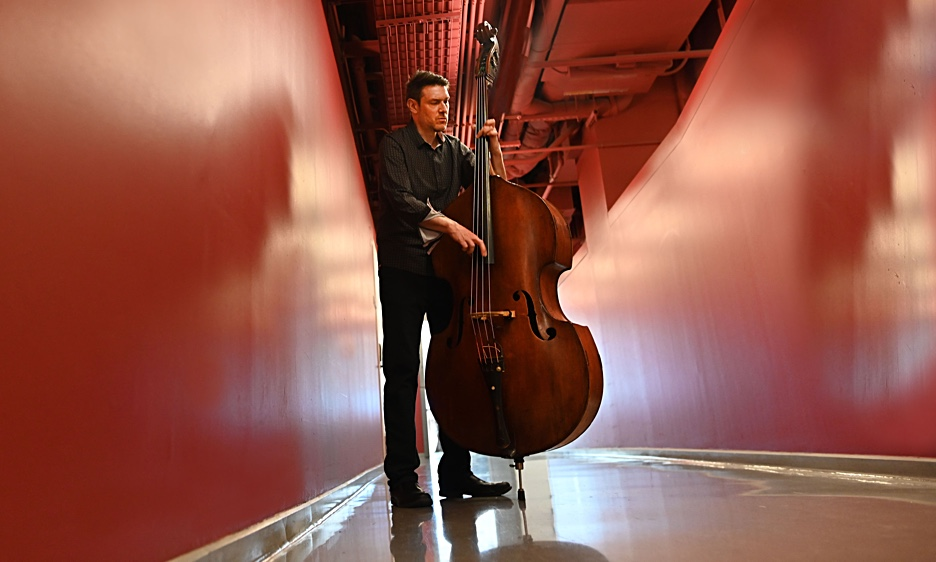
All About Jazz: During the pandemic you started remastering five of your albums. Released as "The Ben Allison Remastered Series 2004-2011" on your own label, Sonic Camera Records, the project is now complete. How did the idea come about?
Ben Allison: Since the beginning of my recording career, my plan was to eventually re-release these albums. My thinking was deeply influenced by a conversation I had with pianist/composer Andrew Hill. I had just finished recording my first album in 1996, which I financed myself. I asked Andrew for his thoughts on selling it to a record label. He described the challenges and frustrations he encountered in his effort to regain control over the albums he had recorded for Blue Note Records in the 1960s. He advised me to never sell the publishing rights to my original music, and to pursue a licensing deal for the recording for a set period of time. I took his advice to heart and was able to negotiate my first record contract along these terms with Palmetto Records. Twenty years later (in 2018), I regained complete control over the ten albums I had recorded.
For a few years, the albums remained out of print as I tried to find the time to work on them. I knew I wanted to remix and remaster them and had ideas about how I wanted them to sound. By then I had also developed the skills as a mixing and mastering engineer to realize those ideas. I had received the masters, along with the various tapes, hard drives, and session notes of the original recording sessions. But my busy life got in the way.
In 2020, the pandemic hit. It was a time of heightened anxiety and loss. For me and many musicians, the complete stoppage of touring, performing, and recording was very hard to deal with. Our way of life had been put on hold and we didn't know how long the music would remain paused. I suddenly found myself with a lot of extra time. I saw this as an opportunity to look back at some of my life's work—to reflect on the music I had made and to begin the process of working on the older albums. It was fascinating to hear them again. They sounded familiar, but also strange. I felt like I was looking at old photographs of myself from a different era, I saw a different Ben Allison.
AAJ: What kind of reflections and memories emerged as you went through this process?
BA: One of the first things that grabbed my attention was the casual, often hilarious banter in between takes. I didn't remember any specifics of the conversations we had in the studio, so listening to them was like hearing them for the first time. We talked about the tunes of course (forms, solos, transitions). But mostly we joked around. There was a lot of laughter. Listening to these snippets of conversations felt a little like eavesdropping. I heard the voices of my friends, people with whom I've shared a rich musical life. I heard the voice of my dear friend Frank Kimbrough who we lost in 2020. But mostly, I heard a group of musicians who were serious about making records. Now, I understand what we were doing—joking around is a technique musicians use to get into the right headspace. Recording music is a mental game. You know that what you're about to play is forever. The musical choices you're about to make will be heard by people for years to come. But you have to push those thoughts aside and not let them get in the way of creativity.
AAJ: You had already recorded four albums for Palmetto Records between 1998 and 2002, in addition to the 1996 debut album Seven Arrows for Koch Records. Why did you start your Remastered Series from the 2004 release?
BA: There's a practical answer to this question. In the early 2000s we started recording directly to hard drives as opposed to other formats such as DATs, ADATs, or analog tape. Today, I can easily open the sessions we recorded on hard drives and pick up where we left off. For this project of remixing and remastering, I started with the albums that were the easiest to work with. For the next batch of albums, I'm going to have to do some data transfer. A few of the first sessions were recorded on analog tape or outdated and finicky formats such as ADAT. The original multitrack tapes of one of my earliest albums Medicine Wheel doesn't actually exist anymore. In the mid 1990s I was producing my own albums and analog tape was very expensive (over $100 for every 15 minutes' of recording time). When we were preparing to record Riding the Nuclear Tiger, I had to make the difficult decision to record over Medicine Wheel in order to save money. So, Medicine Wheel can't be remixed. Fortunately, David Baker, the engineer on that session, did a fantastic job of mixing the original album. However, I do plan to remaster it, which will bring it up to modern standards.
AAJ: You personally took care of all the work by putting in hundreds of hours. Can you walk us through the technical aspects of this work?
BA: Mixing is an artform. There's a science to it too, of course, just as there's a science to playing an instrument. The mixing console is an instrument, and you can learn to play it. I can best explain the process of mixing by using an analogy. Imagine a pond where the surface of the water is completely still, like black glass. You throw a stone into the pond and concentric waves ripple outwards from the point of contact. You throw in another stone and waves ripple out from there. Eventually, these waves meet. In fact, they collide. When the peak of one wave meets the peak of another, the two waves merge and are amplified because the energies of both are added together. And when a peak meets a trough the resulting combined wave is attenuated.
When our two waves meet, they can create a chaotic pattern. It's the job of the mixing engineer to make this collision sonorous and pleasant to shape the resulting waves into something beautiful. I try to create a sense of coherence in the waveforms so that the original sources can still be discerned and don't cancel each other out. The sources in this analogy are the instruments (the saxophone, the bass, the piano, etc). As a mixing engineer, I want the listener to be able to easily locate the instruments in the imaginary space between the speakers (the surface of the pond) and I want the intermingling of the waves to be beautiful. In the end, what matters is how the music makes you feel.
I have a long way to go in terms of where I want to be as a mixing engineer. I'm only recently feeling like I've gained some ability to control things in the ways that I want to. But the process of learning through experimentation is a joyous one, and I feel deep satisfaction when I get things right.
AAJ: There are several surprises in your remastering work: a different layout of tracks and unreleased songs. Would you like to tell us about them?
BA: During my recording sessions, I try to leave some time at the end to play free—to let the tape roll and simply improvise without any pre-determined structures or forms. On the sessions that became the albums Cowboy Justice, Think Free, and Action Refraction, we had enough time to do this. Going back through the original sessions, I found some great moments of collective improvisation. I decided to include some of them on the remastered albums. There's a lot that I didn't include, but I tried to pick moments that seemed to best reflect the sound of each group. For example, the tune I titled "Free Someday" is a collective improvisation that was set in motion by pianist Jason Lindner. The tunes "Mournful Mood Pts 1 & 2" are from the same session. They were recorded as part of the same take, minutes apart from each other, and were the result of trumpeter Ron Horton's ability to evoke the mournful wail of a human voice.
AAJ: You have always focused on your original compositions but, starting with Peace Pipe you expanded your interest to songs by pop and rock songwriters, with a special focus on artists that you admire deeply like Neil Young and John Lennon. Then in Action Refraction we find only two of your compositions, in a playlist that ranges from Monk to Hathaway's "Someday We'll All Be Free," PJ Harvey's "Missed," Neil Young's "Philadelphia," and the Carpenters' hit "We've Only Just Begun." Why those choices and why did you stop including popular authors in your following records?
BA: Action Refraction is my "covers" album. After having recorded nine albums of mostly original material, I decided to try my hand at interpreting other people's music. My first idea was to see if I could pull together a very diverse and stylistically varied list of songs and reimagine them so they'd fit together as a cohesive album. When I'm writing, I think in terms of albums. The tunes are meant to work together, almost like a suite, to paint a full picture. Once I had selected the tunes for Action Refraction, the next step was to take them apart and then, looking for common threads, put them back together. I felt that if I could connect The Carpenters with Samuel Barber and with PJ Harvey, I would probably have something pretty unique. Ultimately, it's up to listeners to decide if I was successful, but it sure was fun to try.
AAJ: In your discography you have often returned to songs that were recorded on earlier albums, e.g. "Blabbermouth" or "Four Folk Songs." Every time you've done so you've shed light on details of those songs which were not evident in the earlier version. How does this process of 'discovering details through a remastering' compare with, or differ from, that process of 'discovering details through re-interpreting an old song of yours'?
BA: All my tunes are "works-in-progress." They're never really done or etched in stone. As I've mentioned, I like to take things apart and put them back together again. That's what I'm doing with these older albums when I remix them from scratch. I have a similar approach with my compositions when I rearrange and reimagine them for different bands and albums. To me, these processes are related. They both involve taking existing sounds and ideas and hearing them with fresh ears. I mean that metaphorically of course. My ears are the same as they were 20 years ago. It's my brain that's different.
AAJ: The two unreleased and completely improvised tracks now contained on the Think Free reissue ("The City at Night" and "Steve Austin"), shed new light on that quintet. Why were they not included on the original album?
BA: These two tunes are examples of the freely improvised pieces that I discovered during the remixing process. As to why they were not included on the original album, that's a good question. I think it comes down to the fact that we made these records very quickly. Most were made in a day and a half of recording and a day and a half of mixing. The early albums were mixed manually, meaning that we did not have automation. The "mixdown" as it was called then, involved moving faders in real time, as the tracks were being bounced down to stereo. Without getting too technical, what that means is that each mix was itself a kind of performance. A one-time deal. Sometimes we'd do a few mixdowns and pick the best one. But usually, we just did one and moved on. When I reopened the sessions for this project I discovered some missing pieces. A few times we forgot to unmute a track. There were also some strange decisions made. For example, when we faded the tune "Sleeping Giant" (Think Free, 2009) before the end. I don't remember why we did that. It makes no sense. All of these parts, sections, and endings have been restored now.
AAJ: Do you plan to remaster Medicine Wheel, Third Eye, Riding the Nuclear Tiger and Peace Pipe as well?
BA: As I mentioned, Medicine Wheel can't be remixed. And I'm not sure if the original Third Eye session tapes are still playable, but that is next on my list to explore. I am currently in the process of remixing and remastering Peace Pipe. I can't wait for folks to hear it because it's sounding amazing so far. When we recorded it (2001), the technology had advanced to the point where we could record at a depth of 24 bits per sample. In simple terms this means that we captured a lot of dynamic range. It's awesome to work with recordings that sound this good.
AAJ: Are there plans to release this series on compact disc and/or vinyl?
BA: I have no plans in the immediate future to release these older albums in physical formats. The 24-bit FLAC versions are all available on my website, and this is as close to the master tapes as you can get. I do dig vinyl and would love to make high quality vinyl versions of these albums.
The challenges are that the cost of production is very high (meaning I'd have to sell a lot just to break even) and the production time is very long. Once you send stampers, you have to wait about a year before the pressing plant gets to your project. You'd think with the resurgence of interest in vinyl these production times would get faster. It seems the creation of new plants has not kept up with demand.
AAJ: Let's talk about Healing Power, the latest album by The Trio that you co-lead with Ted Nash and Steve Cardenas, dedicated to the music of Carla Bley. How did the idea and the choice of songs come about?
BA: Steve, Ted and I have been performing and recording as a trio for about ten years. It's truly collaborative, meaning that there is no leader of the group. Our first album is called Quiet Revolution (2018). It features music by Jim Hall and Jimmy Giuffre, along with three originals and was initially released under my name since I had taken the lead in organizing it. Our second album is called Somewhere Else: West Side Story Songs (2019). The idea of taking on this music came from Ted and it was released on his label Plastic Sax. Following that, it was Steve's turn. He landed on the idea of recording music written by pianist/composer/arranger Carla Bley.
Steve has been a member of two groups in which Carla played a major part: Charlie Haden's Liberation Music Orchestra, where she served as conductor/arranger and played piano, and the Steve Swallow Quintet, in which she played organ. So, he's had a rich musical history with her. Ted and I both thought her music would be perfect for the trio. Steve picked the tunes and secured the deal with Sunnyside Records.
AAJ: What criteria did you adopt for the reinterpretations of such distinctive compositions?
BA: One of the things we all love about Carla's music is that it strikes a beautiful balance between being unique and full of nuance and surprising details while also being very open to interpretation. Her music is extremely evocative. It challenges you to be creative. You can't just amble your way through her tunes. They demand a certain kind of attention and offer so much in return.
AAJ: Carla Bley was a key figure in the Jazz Composers Guild and she co-led the Jazz Composers Orchestra. Has she been a source of inspiration with you, not only musically, but also as an activist when you decided to co-found the Jazz Composers Collective?
BA: Actually, the idea for the Jazz Composers Collective came from another source entirely. In the early 1990s, I had been reading some letters that Arnold Schoenberg and Alban Berg had written to each other in which they complained about the music scene in Vienna in 1918. In those days, the venue owners controlled whose music was performed. The music critics also had an oversized influence on what was produced. Schoenberg's solution was for the composers to organize their own concerts featuring the new music that was happening. These composers included many of what we now think of as luminaries: Bartok, Webern, Debussy, Satie, Stravinsky, etc.
At that time, these composers were often derided. By banding together, they were able to create opportunities to perform their music on their own terms. They found wealthy patrons to host "salon concerts" and they built audiences who were curious about new music. Reading about this reminded me so much of the loft jazz scene in NYC in the 1970s. The idea of musicians taking things into their own hands sounded very empowering. I thought we could try to do the same thing with our music. Schoenberg didn't want the composers featured to be limited to those in his own circle, but rather insisted that they be drawn from an ever-widening circle. In fact, for the first two years of the Society, he refused to have his own music performed. For these artists, it was about building a community of composers, musicians and audiences.
Inspired by these ideas, we structured the Collective so that each concert in our series would be composed of two halves—the first would feature one of the founding members of the organization and the other would feature a guest composer. The guest would be someone who had never performed with us before. We requested that composers write new music for each concert. From its formation in 1992 until its dissolution in 2005, the Collective presented over 100 concerts, featuring the work of over 50 composers, the participation of over 25 musicians, and most importantly the premiere of over 300 new works. We held an annual six-day festival, had residencies at the Museum of Modern Art and The New School, produced albums and organized tours for some of our groups, and published a newsletter in which the composers wrote about their music. We also hosted many free events geared towards educating musicians about various aspects of the music business. Looking back, I feel a great sense of gratification for what we were able to accomplish. That experience, probably more than any other that I can think of, helped shape me as an artist.
AAJ: In addition to your busy schedule as a musician you are now also very active as an educator and an activist. How did these activities unfold from your musical career and how do you integrate all of them in your life?
BA: After the dissolution of The Jazz Composers Collective, I was too busy touring and recording to do much else. But after a time, I started to become aware of the hole in my life that the absence of the organization had left. I'm an organizer by nature. I like working with people to do things.
So in 2011, when a professional colleague encouraged me to run for a seat on the Board of the New York chapter of The Recording Academy, I leapt at the chance. The Recording Academy is best known as the organization behind the Grammy Awards, but they are also very active in efforts to support music creators in other ways. They advocate for performing rights, copyright reform, and other initiatives to strengthen the music industry and improve the lives and work environments of music professionals.
And they provide aid for musicians in need through their organization MusiCares. By the end of my first year on the Board, I had become chair of the Advocacy Committee, and then rose through the ranks to become Vice President and eventually President. This experience was like a crash course in music business. I spent a lot of time with some very accomplished professionals from all across the industry, from label executives, to managers, to music attorneys, to Grammy award winning engineers, producers, songwriters and performers. I met directly with Members of Congress regarding issues important to musicians, and got the chance to testify in front of the House Committee on Energy and Finance in support of performing rights. In 2011, I joined the faculty of the College of Performing Arts at The New School, where I teach classes in entrepreneurship, and music technology and theory, along with private lessons in bass and composition. I'm currently serving my second term as co-chair of the University Faculty Senate.
Tags
Interview
Angelo Leonardi
Ben Allison
Andrew Hill
Frank Kimbrough
Jason Lindner
Ron Horton's
Neil Young
John Lennon
Samuel Barber
PJ Harvey
Ted Nash
Steve Cardenas
carla bley
Jim Hall
Jimmy Giuffre
Charlie Haden's
Steve Swallow
PREVIOUS / NEXT
Ben Allison Concerts
Support All About Jazz
 All About Jazz has been a pillar of jazz since 1995, championing it as an art form and, more importantly, supporting the musicians who make it. Our enduring commitment has made "AAJ" one of the most culturally important websites of its kind, read by hundreds of thousands of fans, musicians and industry figures every month.
All About Jazz has been a pillar of jazz since 1995, championing it as an art form and, more importantly, supporting the musicians who make it. Our enduring commitment has made "AAJ" one of the most culturally important websites of its kind, read by hundreds of thousands of fans, musicians and industry figures every month.











